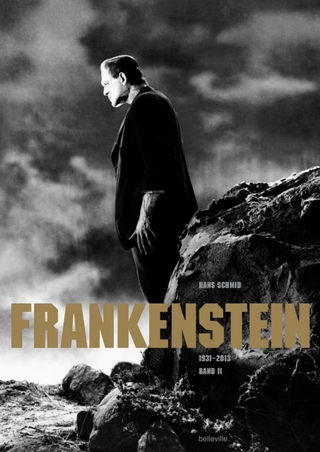
Mental Illness in Popular Culture
Praeger Publishers Inc (Verlag)
978-1-4408-4388-4 (ISBN)
Mental health professionals and advocates typically point a finger at pop culture for sensationalizing and stigmatizing mental illness, perpetuating stereotypes, and capitalizing on the increased anxiety that invariably follows mass shootings at schools, military bases, or workplaces; on public transportation; or at large public gatherings. While drugs or street gangs were once most often blamed for public violence, the upswing of psychotic perpetrators casts a harsher light on mental illness and commands media's attention. What aspects of popular culture could play a role in mental health across the nation? How accurate and influential are the various media representations of mental illness? Or are there unsung positive portrayals of mental illness?
This standout work on the intersections of pop culture and mental illness brings informed perspectives and necessary context to the myriad topics within these important, timely, and controversial issues. Divided into five sections, the book covers movies; television; popular literature, encompassing novels, poetry, and memoirs; the visual arts, such as fine art, video games, comics, and graphic novels; and popular music, addressing lyrics and musicians' lives. Some of the essays reference multiple media, such as a filmic adaptation of a memoir or a video game adaptation of a story or characters that were originally in comics. With roughly 20 percent of U.S. citizens taking psychotropic prescriptions or carrying a psychiatric diagnosis, this timely topic is relevant to far more individuals than many people would admit.
Sharon Packer, MD, is a practicing psychiatrist and psychopharmacologist and an assistant professor of psychiatry.
Introduction
Sharon Packer, MD
Part One Cinema: The Big Screen
Chapter 1 Psychoanalytic Renditions and Film Noir Traditions
Rosa JH Berland
Chapter 2 The Meme of Escaped (Male) Mental Patients in American Horror Films
Jeffrey Bullins
Chapter 3 Filming Hallucinations for A Beautiful Mind, Black Swan, Spider, and Take Shelter
Jocelyn Dupont
Chapter 4 Dissociative Identity Disorder in Horror Cinema (You D.I.D.n't See That Coming)
Michael Markus
Chapter 5 Spirit Possession, Mental Illness, and the Movies, or What's Gotten into You?
Sean Moreland
Chapter 6 Hitchcock: Master of Suspense and Mental Illness
Mark O'Hara
Chapter 7 McMurphy the Trickster, Foucault, and One Flew Over the Cuckoo's Nest
Mark O'Hara
Chapter 8 "Nature Played Me a Dirty Trick": Illness vs. Tolerance in Gay-Themed Film
Eric J. Sterling
Part Two Television: The Small Screen
Chapter 9 Women's Agency as Madness: "The Yellow Wallpaper" to Penny Dreadful
Laura E. Colmenero-Chilberg
Chapter 10 Orange Is the New Color for Mental Illness
Mary L. Colavita, Kate Lieb, Alexis Briggie, Sonal Harneja, and Howard L. Forman
Chapter 11 Suffering Soldiers and PTSD: From Saigon to Walton's Mountain
Haley Gienow-McConnell
Chapter 12 Mirth and Mental Illness: Television Comedy and the Human Condition
Kristi Rowan Humphreys
Chapter 13 Mentally Ill Mobsters: From Cagney's White Heat to Scarface to Bugsy and Crazy Joe
Vincent LoBrutto
Chapter 14 How Traditional Holiday TV Movies Depict Mental Illness
Martin J. Manning
Chapter 15 Cotard's Syndrome in True Detective, Alien Invaders, Zombies, and Pod People
W. Scott Poole
Chapter 16 House, Monk, Dexter, and Hannibal: "Super-Powered" Mentally Ill TV Characters
Lisa Spieker
Part Three Novels, Poetry, Memoirs, and Short Stories
Chapter 17 Sanity and Perception in Philip K. Dick's Clans of the Alphane Moon
Aaron Barlow
Chapter 18 Medea, Mothers, and Madness: Classical Culture in Popular Culture
Daniel R. Fredrick
Chapter 19 Narratives in The Snake Pit, I Never Promised You a Rose Garden, and Girl, Interrupted
Jessica N. Lee
Chapter 20 Edgar Allan Poe's Unreliable Narrators, or "Madmen Know Nothing"
Caleb Puckett
Chapter 21 Lovecraft and "An Open Slice of Howling Fear"
Eric Sandberg
Part Four Comics, Art, Graphic Novels, and Video Games
Chapter 22 Mind Games: Representations of Madness in Video Games
Shawn Edrei
Chapter 23 Graphic Narratives: Bechdel's Fun Home and Forney's Marbles
Nicole Eugene
Chapter 24 The X-Men as Metaphors: When Gayness Was Illness
Mariel Freeman Lifschutz
Chapter 25 Arkham Asylum's Criminally Insane Inmates and Psychotic Psychiatrists
Sharon Packer
Chapter 26 Halfworld's Loonies in Rocket Raccoon Comics—Serious or Satire?
Sharon Packer
Chapter 27 Van Gogh and the Changing Perceptions of Mental Illness and Art
E. Deidre Pribram
Chapter 28 From the Beats to Jean-Michel Basquiat: Cultural Madness and Mad Art
Morgan Shipley
Chapter 29 "Autists" and Merchandising "Autistic Art"
Leni Van Goidsenhoven
Chapter 30 Slipping into Silent Hill: Transnational Trauma
Brenda S. Gardenour Walter
Part Five Music, Musicians, and Musical Theater
Chapter 31 Kurt Cobain, Nirvana, and Generation X's Suicide Symbol
Robert L. Bryant, Daniel Schwartz, and Howard L. Forman
Chapter 32 Metallica, Heavy Metal, and "Suicide Music"
Adam W. Darlage and Paul "Hoagy" Burton
About the Editor and Contributors
Index
| Erscheinungsdatum | 02.06.2017 |
|---|---|
| Sprache | englisch |
| Maße | 156 x 235 mm |
| Gewicht | 879 g |
| Themenwelt | Kunst / Musik / Theater ► Film / TV |
| Geisteswissenschaften ► Psychologie | |
| Sozialwissenschaften | |
| ISBN-10 | 1-4408-4388-0 / 1440843880 |
| ISBN-13 | 978-1-4408-4388-4 / 9781440843884 |
| Zustand | Neuware |
| Haben Sie eine Frage zum Produkt? |
aus dem Bereich


